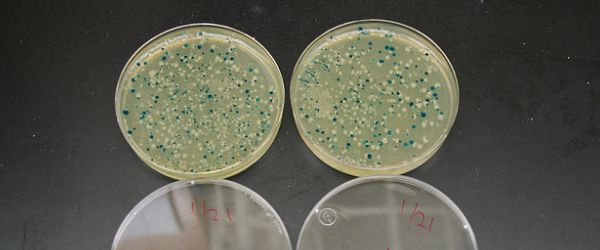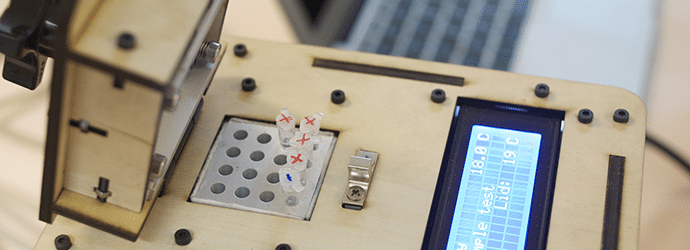Most of us use pretty standard transformation protocols for E.coli. Yours probably goes something like this:
– Thaw the competent cells on ice
– Add DNA
– Electroporate (or incubate then heat shock for chemically competent cells)
– Add rich medium (LB or SOC)
– Incubate at 37°C (or appropriate temperature) for 30-60 minutes
– Spread onto antibiotic plates
That 30-60 minute incubation can be pretty annoying, especially if you are performing the transformation late in the day. The good news is that if you are using ampicillin as your selection antibiotic, you can miss this step out without too much problem.
The reason is that ampicillin acts differently from the other antibiotics commonly used for selection of E.coli in molecular biology (for a great summary, see this article).
Enjoying this article? Get hard-won lab wisdom like this delivered to your inbox 3x a week.

Join over 65,000 fellow researchers saving time, reducing stress, and seeing their experiments succeed. Unsubscribe anytime.
Next issue goes out tomorrow; don’t miss it.
How Many Antibiotics Work
Antibiotics like chloramphenicol and kanamycin act by binding to the bacterial ribosome and inhibiting translation. This means that if you plated your transformation straight onto either of these antibiotics, translation of the antibiotic resistance enzyme would be suppressed, which would prevent the cells from acquiring resistance to the antibiotic.
With these antibiotics, the 30-60 minute incubation allows the cells time to synthesise the antibiotic resistance enzyme so that they can survive when plated on the antibiotic.
How Ampicillin Works
But ampicillin does not work in this way. Instead it prevents newly divided cells from synthesising the cell wall that they need for survival. Looking at it another way, this means that ampicillin does not kill cells unless they are dividing.
So newly transformed cells plated straight onto ampicillin can synthesise the beta-lactamase enzyme required for resistance without any problem, thereby acquiring the means to inhibit ampicillin activity that will allow them to synthesise their cell wall normally when they divide.
Ampicillin is not the greatest selection antibiotic in the world since it can allow satellite colony formation and plasmid loss (see this article) but this feature makes it a bit more convenient than others for transformations.
Having said this, leaving the incubation step out might not be a great idea if you are performing a transformation that requires particularly high efficiency, for example if you are building a library or doing a particularly tricky ligation, because efficiency could be somewhat reduced.
For example, individual cells that were close to dividing at the time of transformation might not have time to synthesise the beta-lactamase before the divide, so would not survive. This will only happen with a small portion of the cell population so will not be a problem for the majority of applications.
What are your favorite shortcuts in the lab?
Article originally published November 2008. Article updated and republished on 19 May 2015.
You made it to the end—nice work! If you’re the kind of scientist who likes figuring things out without wasting half a day on trial and error, you’ll love our newsletter. Get 3 quick reads a week, packed with hard-won lab wisdom. Join FREE here.








